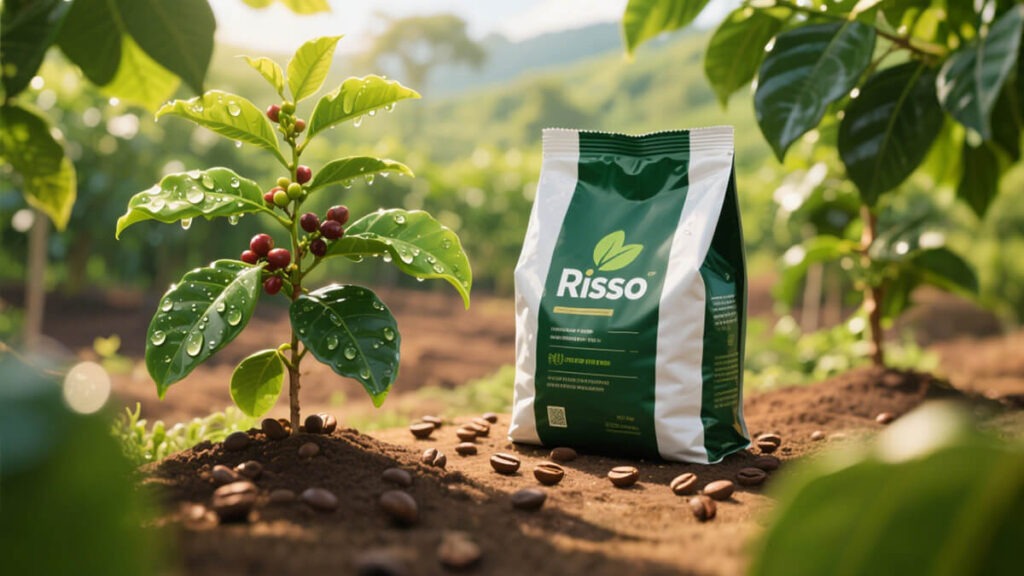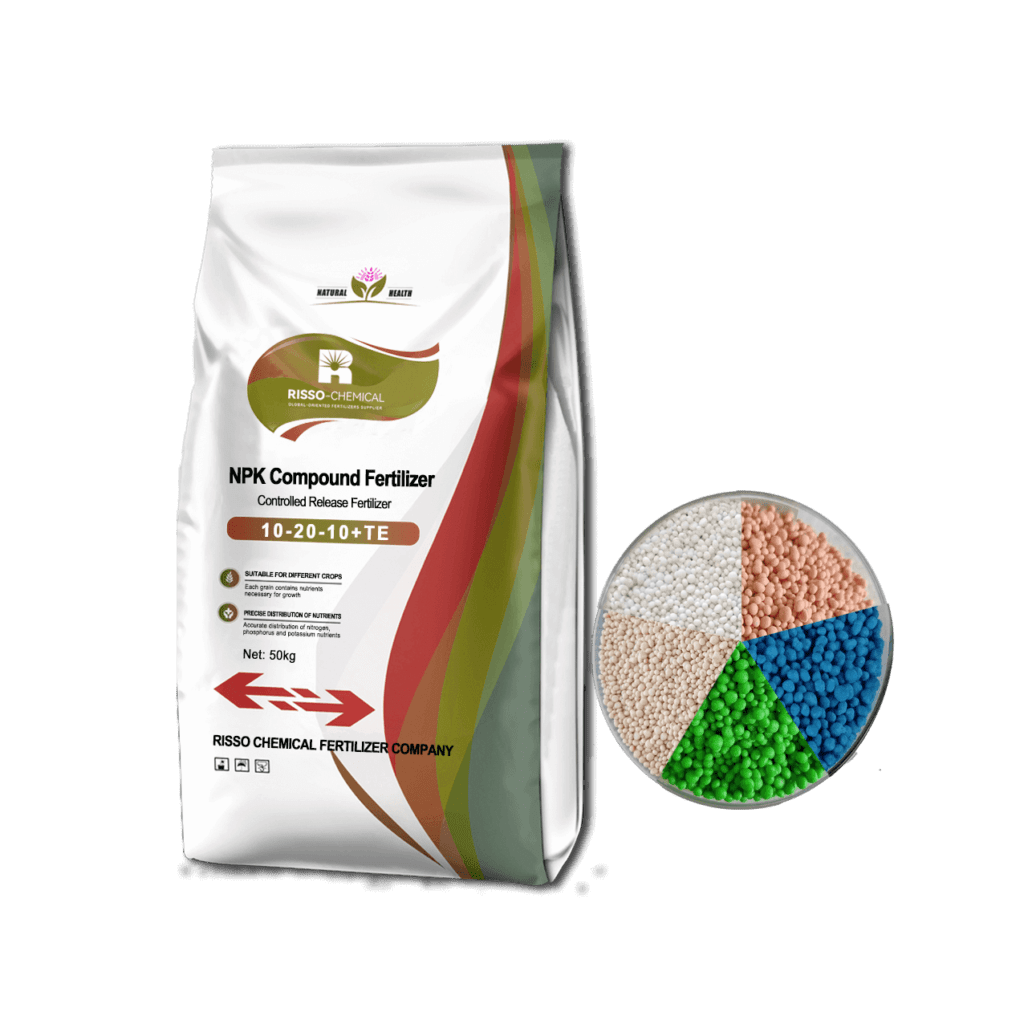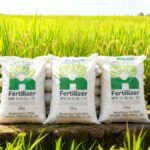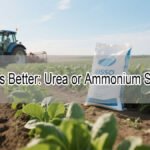Let more growers get greater benefits
Best Fertilizer for Coffee Plants | Risso® Growing Guide
- Industry News
- June 13, 2021
- 4:17 pm

Fertilization plays a crucial role in cultivating healthy, high-yield coffee trees. Whether you’re growing Arabica in high-altitude microclimates or managing Robusta plantations in tropical lowlands, selecting the right coffee tree fertilizer is essential. Coffee is highly sensitive to nutrient imbalances and environmental stress. Insufficient nutrition can result in poor flowering, undersized beans, low cup quality, and increased vulnerability to pests and diseases.
With Risso®‘s advanced crop nutrition solutions, growers can ensure balanced and efficient nutrient delivery throughout the coffee growth cycle. Our scientifically formulated fertilizers promote vigorous leaf and root development, enhance bean density and cup flavor, and help stabilize yields season after season.
This guide will help you understand how to choose the best fertilizer for coffee trees based on growth stages, soil conditions, and local climate. With Risso®, you gain access to a complete portfolio of high-efficiency fertilizer formulations tailored for professional coffee production.
Table of Contents
- 1. Nutritional Needs of Coffee Plants
- 2. Organic vs Inorganic Fertilizers
- 3. Best Fertilizer Types for Coffee
- 4. Fertilization Timing and Application Methods
- 5. Soil pH and Use of Natural Fertilizers Like Coffee Grounds
- 6. Nutrient Deficiency Symptoms and Solutions
- 7. Overfertilization Risks and How to Avoid Root Burn
- 8. Summary: Our Top Recommendations
- FAQ: Common Fertilizer Questions for Coffee Growers
1. Nutritional Needs of Coffee Plants

▶ Macronutrients (N-P-K)
Nitrogen (N): Promotes leaf growth and chlorophyll production. Nitrogen deficiency results in yellowing leaves and stunted growth.
Phosphorus (P): Essential for strong root systems and flowering. Vital during pre-bloom and fruit-setting stages.
Potassium (K): Improves disease resistance, drought tolerance, and bean sugar accumulation. A key nutrient during fruit development.
▶ Micronutrients
Boron (B): Supports flowering and fruit setting.
Zinc (Zn): Involved in hormonal regulation and enzyme activity.
Copper, Iron, Manganese, Molybdenum: Crucial for photosynthesis, respiration, and nutrient transport.
Understanding the proper NPK ratio for coffee trees is vital. A balance of macro and micronutrients ensures vigorous growth and a higher-quality harvest.
2. Organic vs Inorganic Fertilizers
▶ Organic Fertilizers
Examples include compost, aged manure, fish emulsion, soybean meal, and fermented coffee pulp.
Advantages: Improve soil texture, increase microbial life, and provide slow-release nutrients.
Disadvantages: Lower immediate nutrient availability, bulky to apply, and may vary in composition.
▶ Inorganic Fertilizers
Common examples include compound NPK blends such as 10-10-10, 10-20-10, and specialty micronutrient foliar sprays.
Advantages: Quick-release nutrients, precise composition, and easy to measure.
Disadvantages: Risk of salt buildup, root burn, and long-term soil degradation.
✅ Integrated nutrient management—combining organic fertilizers for soil health and inorganic fertilizers for targeted nutrition—is widely considered best practice in modern coffee farming.
3. Best Fertilizer Types for Coffee

| Fertilizer Type | NPK Ratio | Best Use Stage |
|---|---|---|
| Balanced Compound Fertilizer | 10-10-10 | General growth phase, spring to early summer |
| High-Phosphorus Fertilizer | 10-20-10 | Pre-flowering stage, enhances bud formation |
| High-Potassium Fertilizer | 10-10-20 | Bean development and ripening |
| Organic Compost or Manure | Variable | Soil improvement, applied during land preparation or dormant season |
| Micronutrient Foliar Spray | Zn, B, Cu | Correcting deficiencies, fast absorption through leaves |
If you’re cultivating arabica coffee trees in acidic soils, consider pairing slow-release fertilizer for coffee with foliar feeding every few weeks for optimal results.
4. Fertilization Timing and Application Methods
🌸 Spring to Early Summer (Growth Stage):
Apply 10-10-10 liquid NPK fertilizer every 2 weeks
Foliar spray of zinc and boron monthly
🍁 Late Summer to Early Winter (Fruit Development):
Switch to high-potassium fertilizers to support bean filling
Reduce application frequency to once per month
❄ Winter (Dormant Season):
Pause chemical fertilization; apply compost or manure to build long-term soil fertility
For container-grown coffee plants, liquid fertilizer at half-strength is recommended every 10–14 days.
5. Soil pH and Use of Natural Fertilizers Like Coffee Grounds
Optimal soil pH for coffee: 5.5 to 6.5
Coffee grounds are rich in nitrogen but slightly acidic; best composted before use
Use lime or dolomite to neutralize excessive acidity
Conduct annual soil testing to adjust pH and nutrient application accordingly
In sustainable systems, natural fertilizers for coffee trees, including banana peel compost and fermented organic matter, can greatly enhance long-term yield stability.
6. Nutrient Deficiency Symptoms and Solutions

| Symptom | Likely Deficiency | Corrective Action |
|---|---|---|
| Yellowing leaves, stunted growth | Nitrogen (N) | Apply urea or compound NPK 10-10-10 |
| Poor flowering, low yield | Phosphorus (P) | Use superphosphate or 10-20-10 |
| Leaf edge burning, poor bean filling | Potassium (K) | Use potassium sulfate or mono potassium phosphate |
| Weak flowering, poor fruit set | Boron, Zinc | Foliar spray of boric acid or zinc sulfate |
7. Overfertilization Risks and How to Avoid Root Burn
Applying too much fertilizer—especially high-salt-index chemical fertilizers—can lead to root damage, salt accumulation, and microbial imbalance.
Tips to avoid root burn:
Follow manufacturer dilution guidelines (usually 1:1000 for liquids)
Use slow-release fertilizers for potted coffee plants
Avoid fertilizing during hot, dry periods or immediately before heavy rainfall
Combine chemical fertilizers with organic matter to reduce salt stress
8. Summary: Our Top Recommendations
✔ For Home Growers:
Use Risso® 10-10-10 All-Purpose in spring
Apply Risso® Organic Coffee Blend during off-season
Spray Risso® Micronutrients monthly for healthy flowering
✔ For Commercial Plantations:
Follow the Risso® Coffee Nutrient Calendar
Use Risso® Controlled Release Fertilizer products for labor efficiency
Combine organic and synthetic fertilizers for soil sustainability
Risso® is trusted by thousands of coffee growers across Latin America, Africa, and Southeast Asia—delivering results from the ground up.
FAQ: Common Fertilizer Questions for Coffee Growers
Q1: Can I use fresh coffee grounds as fertilizer?
A: Only after composting. Raw coffee grounds are acidic and can lead to mold or nitrogen tie-up in the soil.
Q2: What is the ideal NPK ratio for coffee plants?
A: During early growth: 10-10-10. Pre-flowering: 10-20-10. Fruiting: 8-12-20. Adjust based on soil analysis.
Q3: How do I know if I’ve overfertilized my coffee plants?
A: Signs include brown leaf tips, root decay, and sudden plant wilting. Flush the soil with clean water and stop fertilizing temporarily.
Related Coffee Fertilizers
- Article
What will you get when touch?
✔ Quick & helpful reply within 6 hours.
✔ Tailored solutions for your project.
✔ One-stop product, tech, market
TRENDING
TAIAN RISSO CHEMICAL FERTILIZER CO.,LTD
- Address: High-tech Development Zone, Taian City, Shandong Province
© Copyright 2017 RISSO CHEMICAL. All Rights Reserved.











